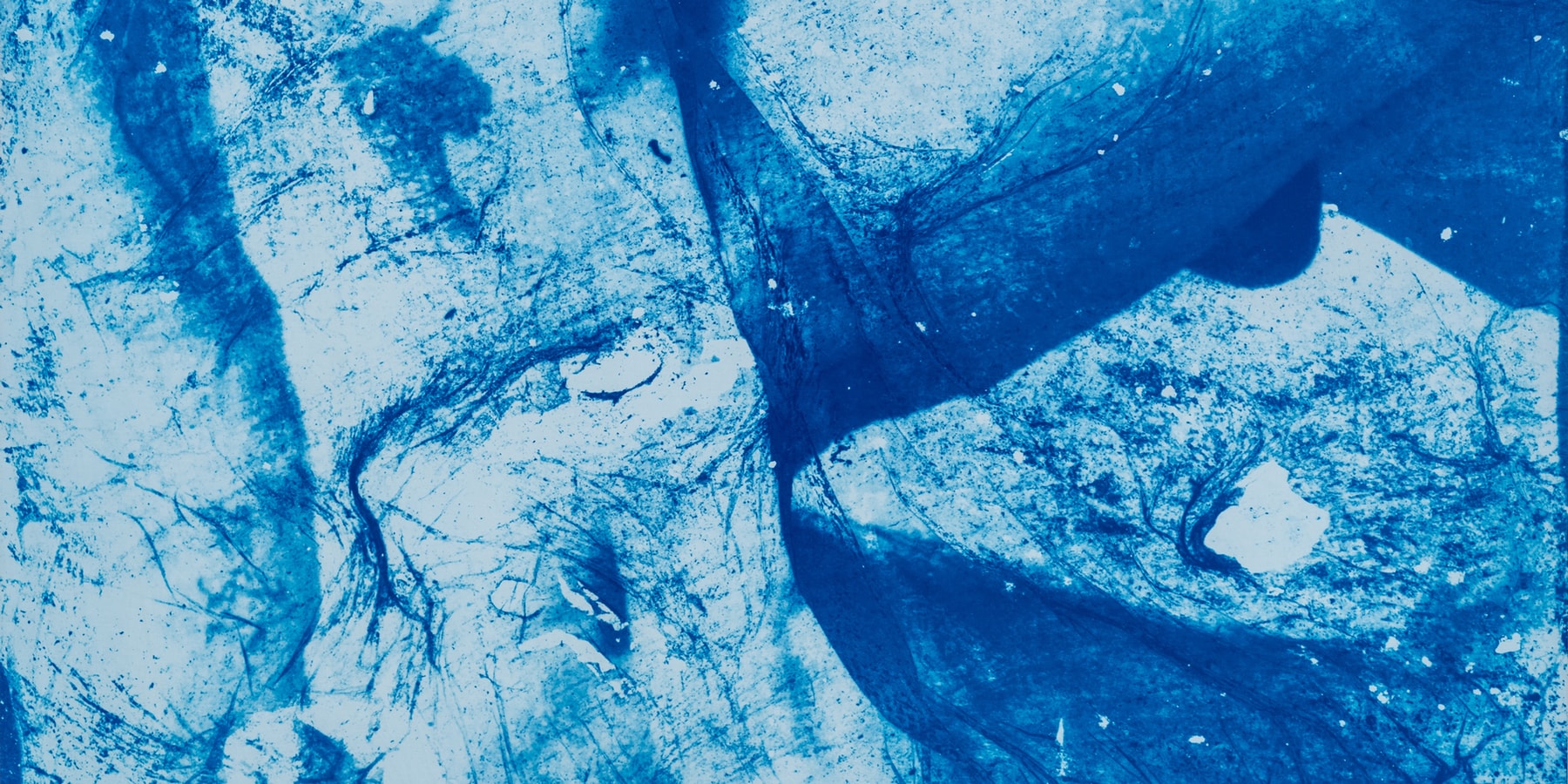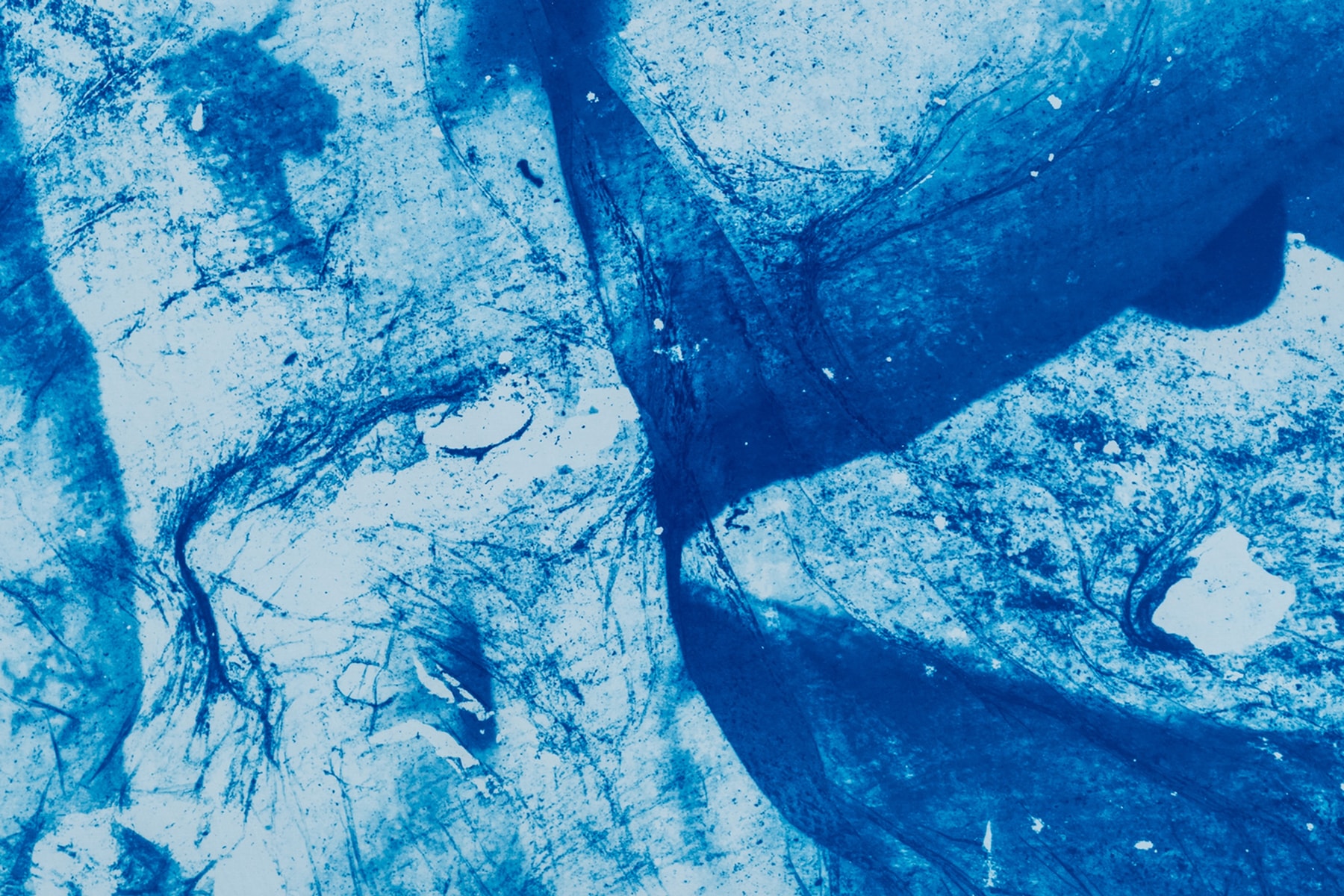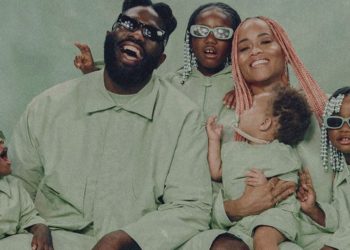
 Hypeart Visits: Diana SinclairFor the rising star, creating cyanotypes is an alchemical act.By Erin Ikeuchi
Hypeart Visits: Diana SinclairFor the rising star, creating cyanotypes is an alchemical act.By Erin Ikeuchi
In the tradition of artists whose work outlives its maker, Diana Sinclair creates with an eternity in mind. Her works, each their own act of communion, connect her with those who came before, those still yet to come and hold space for the too-many stories erased and left behind.
Born and based in New Jersey, Sinclair came onto the scene with refreshing velocity, with a sold-out Christie’s auction already under her belt. It’s the kind of attention that might have anchored another young artist to familiar ground. Yet for her, evolution was still imminent, and with it came a new artistic language that captured the world as she truly saw it.
Last year, she landed a spot at the World Trade Center’s coveted Silver Art Project residency, trading her Web3 beginnings for the alchemy of cyanotypes. Drawn to the medium’s unpredictable nature and hypnotic cobalt palette, she began using it as a lens to explore the historic and spiritual ties between Black communities and water, a theme informed by her own experience as a swimmer.
The resulting works feature rounded figures suspended beneath sublime veils of blue. Alive with movement and friction, each surface, she says, is touched by “chance,” straddling lands of the living and the lost, beauty and grief, the personal and political.
Now 21, fresh off her debut solo exhibition at Plato Gallery, Sinclair is optimistic for all that awaits. “I feel like a small plant in a big pot,” she reflects. “There’s a lot for me to learn and grow from.” For this latest edition of Hypeart Visits, we caught up with Sinclair on the heels of Threaded Blue to discuss her multivalenced practice and what it means to reconnect with history in the face of its unsteady waters.
“I view the world through the lens of light and shadow, shapes and lines, which has allowed me to have very beautiful experiences throughout my own life.”
What was your creative upbringing like?
My dad’s an artist when it comes to pen, paper, charcoal. My mother’s an artist because she’s a storyteller and a writer. I was homeschooled, so I ended up in the middle of them.
My dad wanted me to be able to see and translate the world, so he taught me the foundations of drawing. I would sketch all the time and became really obsessed with curves, contours and shapes. Now, I view the world through the lens of light and shadow, shapes and lines, which has allowed me to have very beautiful experiences throughout my own life.
How do you envision your relationship to your work?
I’ve been seeing spirals a lot, circling back and connecting at different places. There’s a relationship to time, memory, experience, but also separation and detachment. It’s all constantly evolving.
With these works and the show in general, I’m speaking about young black boys who drowned or had complex relationships with water and pool spaces. At the beginning of last year, I had a near-drowning experience in Costa Rica. When I started with these works, it wasn’t on the forefront of my mind, but through that, I gained a degree of understanding and I’ve been able to apply that empathy to the art.
You were embraced by the art world early on in your career. Reflecting on your artistic practice, are there any moments that have really allowed for that understanding and empathy towards yourself?
When I was 13, I entered a competition for young artists in Brooklyn. I was nervous because at the time, I had no proximity to other artists. I ended up winning first prize, and the judges told me that I should be grateful that I didn’t have a formal education because it allowed me to think outside the box. I carry that with me especially when I’ve had moments of doubt.
Having a solo show feels like dropping an album: you condense and cut things out and try to figure out the language and the message. That was an ‘aha moment’ in terms of how I understand my career going forward, and finding more security and faith in the spaces that I’m in, spaces I deserve to be.
On this out-of-the-box line of thinking, I’m curious what it’s been like working with cyanotypes. I heard that you invented your own kind of exposure chamber.
Anybody who works with cyanotypes knows that they can be really frustrating to work with. I was able to get it down to a personal science, but that came from a lot of trial and error. There’s a world of possibility within what I can control, but outside of that, there is opportunity in allowing for error and evolution, which sometimes can be the same thing.
“There’s a world of possibility within what I can control, but outside of that, there is opportunity in allowing for error and evolution, which sometimes can be the same thing.”
Are there other instances of chance present through your process for this body of work?
There was opportunity for change and destruction and evolution at every point of the process. Even working with the subjects, a lot of them posed nude for the first time. People didn’t just come in and throw off their clothes – we spent hours on set. I had to view the body as an object or material, but couldn’t lose the person. I told them, ‘Take as long as you need. You don’t have to take your clothes off now or even today.’ That intimacy has to be generated authentically.
I shot 50 to 100 polaroids per session. I’d have an image that I was so excited about, put it into boiling water, something would go wrong and I would lose it. But maybe, for some reason that was meant to be. “Return to the Womb” was a “mistake” at the beginning. It was the first one I made.
Part of being intimate is allowing for things to be as they are, and I learned that through this body of work. Art is a very spiritual practice if you allow it to be, and Threaded Blue is about that character of chance, which is also a natural quality of water.
“I didn’t expect all of this to open up, but I started to see it spiral outwards.”
Within the exhibition, you grapple with a wide range of eras and ideas. What are some of the themes explored in the pieces?
The square pieces are about the physical and spiritual element of the deaths of people who passed away during the Middle Passage. This whole body of work was inspired by residence time, which is the amount of time it takes for the ocean to fully consume something. For bodies, that takes about 260 million years.
For me, there’s a question of whether death by water is different from a burial. I’m thinking about the DNA of people who were thrown, and the choices made by those who took fate into their own hands and jumped. It brings me back to the sense of faith that people had in death — that release over the life of enslavement they were being delivered to.
The cyanotypes revolve around the center sculpture made out of pool tiles. How does modern day swimming culture and aquatic spaces play into this?
You can watch America evolve through a pool space. I became fascinated by social boundaries and how people were forced to face them in swimming pools. In other spaces, we were moving towards a progressive mindset, yet there was still a lot of tension in these spaces and they led to a lot of suffering and death.
The work started with researching the segregation of pools because of my relationship with water as a swimmer. It made me feel extremely othered and created permanent damage to my body. I watch my brother swim as a way to open doors for himself, in spite of his own experiences. I had to sit with the things that I had gone through and ask why they happened. I didn’t expect all of this to open up, but I started to see it spiral outwards: water is necessary to life, so how are we holding trauma on mental, physical and spiritual planes?
The title came to me as I was thinking about time. The works are on fabric, but I also wanted to consider how threads weave and layer on top of each other. I believe that the future can also affect the past, it’s not always linear. It’s a question of how we got here and what happened after we arrived.
As an artist who works at the intersection of more than a few themes and ideas, do you have any advice for how to keep your thoughts organized?
Mind maps. It’s valuable to put everything you’re thinking on one page — associative writing to dig into the patterns and relationships between the core theme and other ideas on your mind or sitting on your spirit.
“This is like my championship season.”
How does spirituality figure into your practice?
It’s the foundation for everything. Going through those cycles of release and frustration was a spiritual practice. Moving through the highs and lows, and alchemizing the lows into progress.
In every area of life, the chaos of destruction and evolution will always spiral back around. The works serve as markers of time through these stages, and I have to make sure that that connection and conversation is always at their core.
Beyond the conceptual, would you say your experience as an athlete shaped the more literal approach to your practice?
My relationship to sports impacted how I think about my practice and my studio time. This is like my championship season, I have to be very present with the pieces I’ve been working toward all season.
After this, I should take a little break, but then I have to get back into building up my artistic stamina. I’ll go through an exploratory phase and accept the new frustrations that come with. I’ll figure out how to apply those lessons from last season, and hopefully it’ll be a smoother process because I’ll allow myself more grace.
“There’s an element of surrender and release with what people can teach me about what I make.”
How do you satiate yourself creatively during these periods of high stress?
I try to attend to my student side when I’m talking with others about my work. People bring an element of chance; I don’t have control in their interpretation. I don’t enter the gallery thinking that I know more than anyone about this work. I don’t own it, I’m just the vehicle for these ideas.
There’s an element of surrender and release with what people can teach me about what I make. Those conversations help me dig into whatever I’m working on next. It’s a part of how I keep curious.
Behind the works themselves was a rather intense research process. What did that look like? Who were some of your interlocutors?
There are very few people that I’ve spoken to that know more than me about this — it’s my special interest. My first conversation with Jeff Wiltse who wrote Contested Water. Incredible book. I reached out to Kevin Dawson. We had a great conversation about his work Undercurrents of Power, which relates to where my family’s from. There’s also Ehemi Ora, who writes a lot about water and traditional African spiritualities. I learned she’s an artist in the city and we’ve become very close friends.
Those relationships, the conversations, the personal impact, they’ve really shaped practice and will continue to do so. I’m very much into world building, and that’s what I get to do. There are these people that inform my world, and I’m building out my Bible.
Studio photos by John Manuel Gomez. All artwork courtesy of the artist and Plato Gallery.
The post Hypeart Visits: For Diana Sinclair, the Medium Is the Message appeared first on Hypebeast.




